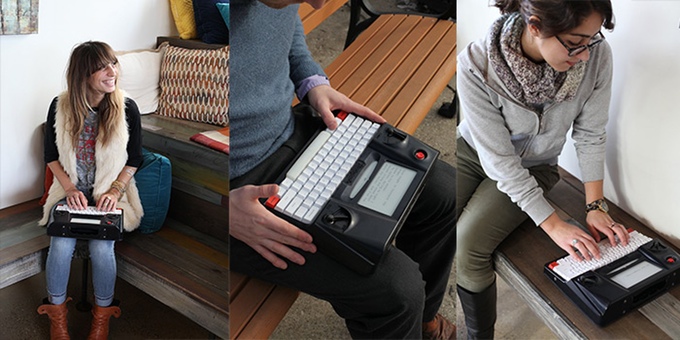Distracted writers of the world, your no-frills typing machine is ready for purchase.
Several years in the making, the Freewrite hopes to succeed where many minimal word processor apps have miserably failed, giving easily distracted folks who write for a living the chance to finally wave goodbye to their second career as a professional procrastinator.
Sporting an E Ink display, the machine formerly known as the Hemingwrite is a souped up typewriter or a pared down PC, depending on how you look at it. Its admirable aim is to allow writers to write instead of wasting time surfing the Web, checking emails, watching videos, hitting Facebook, and so on.

Whether you’re bashing out an article for a tech site or in the midst of creating your first blockbuster novel, all your precious words can be quickly saved to your Dropbox, Evernote, or Google Drive account thanks to Freewrite’s Wi-Fi functionality. However, if there’s no chance of getting online, its internal storage can handle around a million pages of text, which, unless you’re planning to write a poem about absolutely everything, sounds like more than enough to us.
Its makers say you’ll get between three and four weeks of battery power with “normal” usage, though it defines this as just 30 minutes of typing a day. Doing the sums, this could mean around 12 hours of intense key-bashing for committed scribes working straight through without a break (there’s no Internet, so what would you do anyway?). Considering Freewrite has no bells or whistles, we’d have expected it to run for a good deal longer – by way of comparison, Apple claims its 13-inch MacBook Air runs for 10 hours during “wireless Web tests.”
The Freewrite, which secured more than $340,000 in funding during its Kickstarter campaign a couple of years back, weighs about 4 pounds (1.8 kg) and includes a built-in carrying handle for extra convenience.
It looks like it could be a genuine solution for professional writers who just can’t help themselves when tempted by the big wide world of the World Wide Web. But just be sure to throw your smartphone out of the window before you get started with it.
The machine is available now, with a 24-hour flash sale today offering it for $449. It’ll then be available for $499 through March, before settling with a $549 price tag. The first shipments are expected to go out next month.


